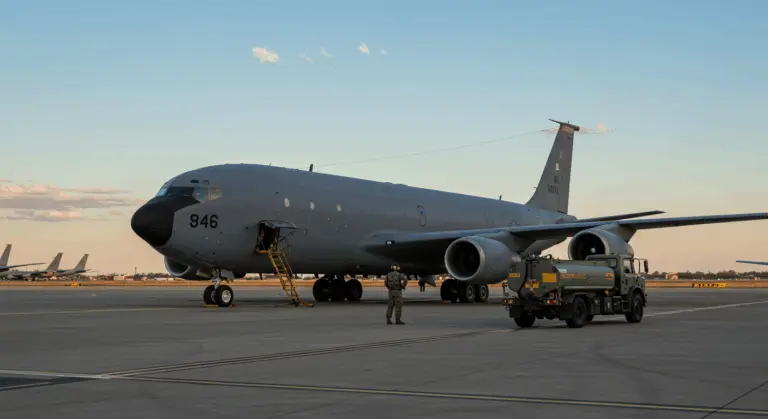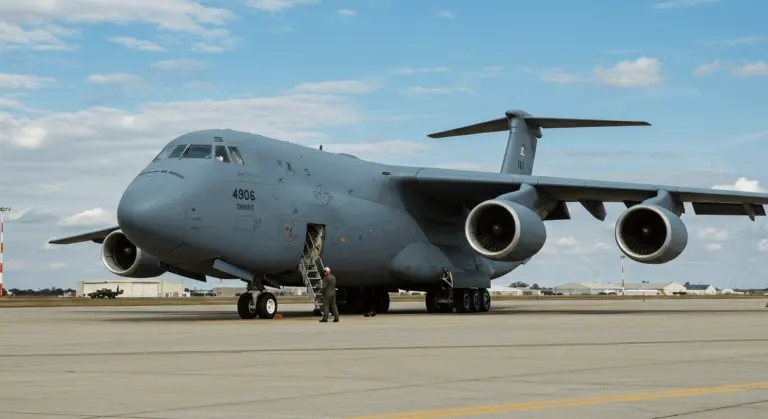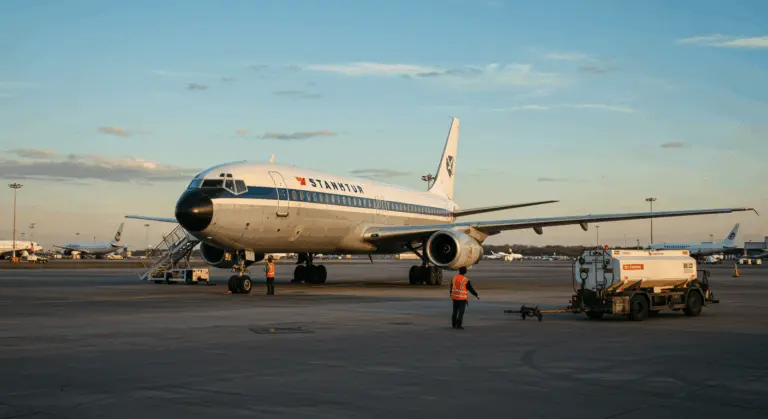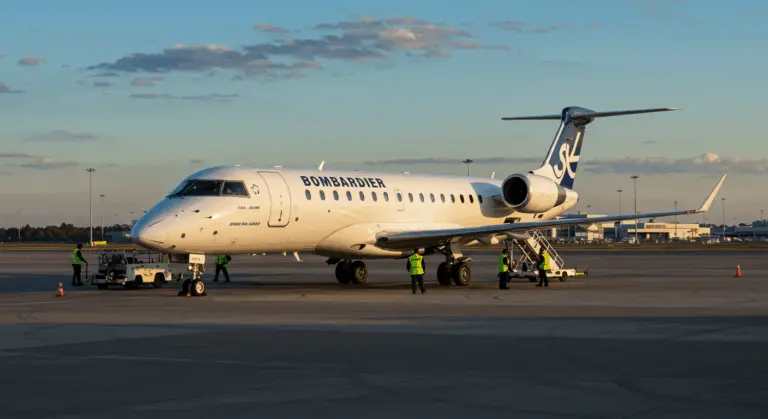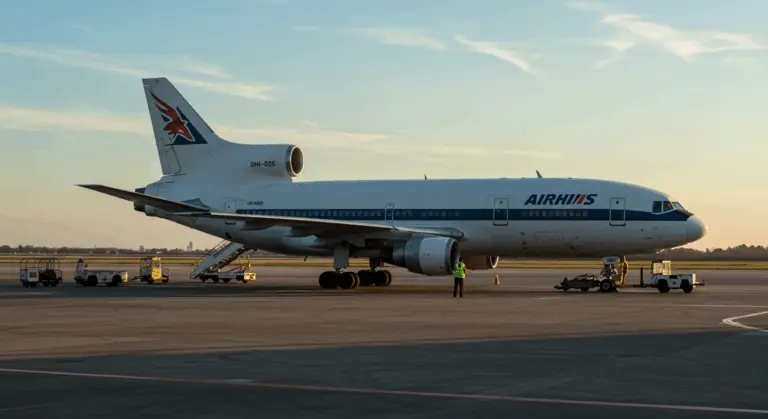Overview of the Dash 8 Aircraft Series
The De Halland Canada DHC-8, commonly known as the Dash 8, represents a groundbreaking series of turboprop-powered regional airliners. When de Halland Canada introduced it in 1984, this aircraft entered the market and transformed regional air travel through its remarkable versatility and operational efficiency.
Originally developed to address growing market demand for efficient, medium-capacity regional aircraft, the Dash 8 carved out its own distinctive niche. This aircraft shouldn’t be confused with GE Transportation’s similarly named Dash 8 Series of diesel-electric freight locomotives, which succeeded the Dash 7 Series in the mid-1980s railroad industry.
Specifications of Dash 8 Aircraft
The Dash 8 series features several distinctive design elements that contribute to its performance and reliability:
-
High-mounted wing: Provides excellent ground clearance and aerodynamic efficiency.
-
T-tail design: Enhances stability and control.
-
Advanced flight control system: Ensures precise handling.
-
Large trailing edge flaps: Improve short-field takeoff and landing performance.
The Dash 8 family uses different power systems, with each variant employing precisely calibrated engine specifications to meet its unique performance demands. The Dash 8-100 uses two robust 1490kW (2000shp) Pratt & Whitney Canada PW120A turboprops, each driving four-blade constant speed Hamilton Standard propellers. This configuration balances between raw power, fuel efficiency, and proven reliability—exactly what regional operations demand.
Fuel capacity tells an interesting story across the family. The Series 100, 200, and 300 share a common 835 USG fuel capacity, delivering an impressive range of up to 760 nautical miles. The larger Q400, however, nearly doubles this with its 1,724 USG capacity, stretching operational range to an ambitious 1,340 nautical miles.
Performance evolution throughout the series reveals fascinating engineering progression. The Dash 8-200’s more powerful PW123C engines boosted cruise speed by a significant 56 km/h over earlier models—a substantial improvement in regional aviation terms. Maximum cruise speeds span an impressive range: from 265 knots for the foundational Dash 8-100 to a remarkable 360 knots for the Q400, whose performance rivals regional jets while maintaining turboprop fuel efficiency.
Variants of the Dash 8
The Dash 8 family encompasses four distinct variants, each meticulously engineered for specific market segments and operational requirements.
| Variant | Passenger Capacity | Key Features |
|—|—|—|
| Series 100 | 37–40 | The original model, establishing the Dash 8’s reputation for reliability and efficiency. |
| Series 200 | 37–40 | Same airframe as the 100 but with more powerful PW123C engines for improved performance. |
| Series 300 | 50–56 | A stretched version to provide increased seating capacity for higher-density routes. |
| Series 400 (Q400) | 68–90 | The largest and fastest variant, featuring an advanced noise and vibration suppression system (‘Q’ for ‘Quiet’). |
The Q-Series, particularly the flagship Q400, embodies the platform’s technological pinnacle. The combination of jet-like speed, exceptional fuel efficiency, and reduced environmental footprint makes it a valuable aircraft for regional airlines across the globe.
Performance Characteristics of the Dash 8
The Dash 8 series has firmly established itself as a performance benchmark in the regional turboprop market, combining speed, efficiency, and operational versatility. Compared to its predecessor, the Dash 7, the Dash 8 demonstrates markedly superior cruise performance and compelling economic advantages, albeit with distinctly different operational characteristics.
The Dash 8 excels in cruise efficiency, delivering outstanding fuel economy and competitive speeds on routes under 500 miles. This efficiency advantage, coupled with significantly lower maintenance costs compared to regional jets, makes it cost-effective for airlines.
The Dash 8’s performance envelope encompasses impressive short-field capabilities, though it cannot quite match the extraordinary STOL (Short Take-Off and Landing) performance of the specialized Dash 7. Nevertheless, the Dash 8 remains remarkably capable of operating from airports with relatively constrained runways, unlocking service possibilities to communities with limited aviation infrastructure.
A trade-off in the Dash 8’s design involves its noise signature, which runs somewhat higher than the whisper-quiet Dash 7. This was largely addressed in later variants, particularly with the revolutionary Q-Series aircraft and their sophisticated noise and vibration suppression systems. These engineering breakthroughs have transformed modern Dash 8 variants into much more community-friendly aircraft, suitable for operations at even the most noise-sensitive airports.
The Q400 represents peak performance in the Q400. Its jet-like speed combined with turboprop fuel efficiency, provides an ideal solution for routes demanding an optimal balance between speed and operational economics.
Operators and Global Reach of Dash 8
The Dash 8 aircraft series has achieved extraordinary global penetration, with over 800 aircraft currently operating across remarkably diverse geographical regions and airline business models. This widespread use demonstrates the platform’s inherent versatility and proven reliability across varied operational environments—from the harsh demands of arctic conditions to the challenges of tropical climates.
Key operator regions include:
-
North America: A staple for regional feeder networks, connecting smaller communities to major airline hubs.
-
Europe: Used for scheduled services and charter operations on shorter routes where its economic efficiency is an advantage.
-
Asia and the Pacific: Serves diverse roles, from high-frequency shuttles to providing essential connectivity for remote island communities.
-
Africa: An ideal solution for developing air transport networks, capable of operating from unpaved or shorter runways.
The remarkably diverse operational profiles of Dash 8 operators showcase the aircraft’s exceptional adaptability. From high-frequency, short-haul routes measured in mere minutes to extended regional services spanning several hours, the Dash 8 family has consistently demonstrated its capability to efficiently serve an impressive spectrum of air transport needs across six continents.
History and Development of the Dash 8
The Dash 8’s origins trace back to the late 1970s, when De Halland Canada’s market analysts saw an opportunity for a new generation of 30 to 40-seat commuter airliners. Development began due to rapidly growing demand for efficient regional air service and the pressing need to replace aging first-generation regional aircraft. The company used its extensive experience with previous successful designs—notably the Twin Otter and Dash 7—to set new standards for regional air transport.
Development continued through the early 1980s, culminating in the first Dash 8 prototypes maiden flight in 1983. The aircraft was designed to provide superior economics and performance compared to existing regional aircraft, while preserving the legendary reliability and ruggedness that had become synonymous with De Halland Canada products. The program transitioned remarkably quickly from development to certification, with the inaugural production Dash 8-100 entering commercial service in 1984.
The aircraft’s evolutionary path was significantly influenced by changing ownership dynamics. Following Boeing’s brief stewardship of De Halland Canada in 1986, Bombardier’s strategic 1992 acquisition led to significant expansion of the family, including development of the Series 300 and the groundbreaking Q400.
Throughout its development journey, the Dash 8 has undergone continuous refinement and enhancement. The methodical progression from the original Series 100 through the Series 200 and 300, culminating in the sophisticated Q400, shows how the platform evolved that preserved the platform’s fundamental strengths while systematically addressing evolving market demands for increased capacity, enhanced performance, and superior passenger comfort. This approach contributed to the Dash 8’s remarkable longevity and sustained relevance in the competitive regional aircraft market.
Future of the Dash 8
De Halland Canada is actively evaluating a potential restart of Dash 8 production, with a definitive decision anticipated by 2025 following enthusiastic industry response at the 2024 Farnborough International Air show. This suggests renewed interest for the iconic turboprop family.
Central to these plans is the proposed development of state-of-the-art production facilities near Calgary—a move that represents a major investment in Canadian aerospace manufacturing capabilities. This strategically chosen location would provide De Halland Canada with modern production facilities designed for efficient assembly of next-generation Dash 8 aircraft and may include advanced manufacturing methods and technologies.
While carefully evaluating full-scale production restart, De Halland Canada has continued progress through its comprehensive refurbishment program. This innovative initiative has already delivered several thoroughly modernized aircraft to satisfied customers, effectively extending the service life of existing airframes while adding selected technology upgrades. The program’s success shows continued market confidence in the Dash 8 platform while providing crucial operational continuity for the type.
An important part of De Halland’s approach to the Dash 8’s future is their commitment to customer-driven development. The company actively solicits airline feedback to guide potential innovations and improvements to the aircraft. This approach ensures that any future Dash 8 variants will directly address real-world operational requirements and genuine market demands, rather than adding technology without clear purpose.
Building on the platform’s core strengths of efficiency and reliability, potential innovations for future Dash 8 aircraft include:
-
Advanced avionics systems
-
Further cabin enhancements
-
Improved aerodynamics
-
Hybrid-electric propulsion technologies as they mature

